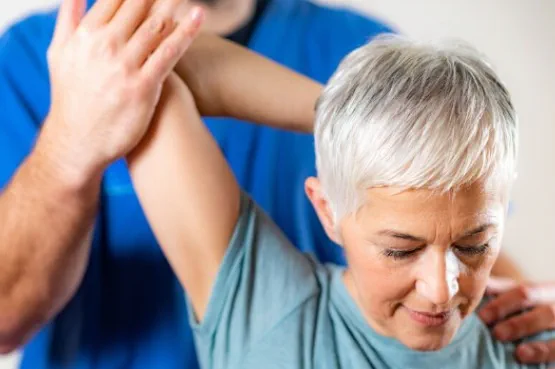Chair yoga: a 5-minute gentle home workout
When at home are you sitting for long periods of time without moving? Chair yoga is a fantastic way to exercise and you can do it while sat down. Why not take five minutes to give chair yoga a go?
Get started by following along to this video or the written steps below. There are two parts of the chair yoga routine, first sitting in your chair and second standing next to your chair. Bupa Health Advisor, Tom Galliano, will guide you through the movements for the chair yoga poses.
Part one – sat at your chair
To start, sit in your chair with your feet hip-width apart and your knees in line with your hips. Place your hands on your knees and practise some deep-breathing. This will help to activate your abdominal muscles.
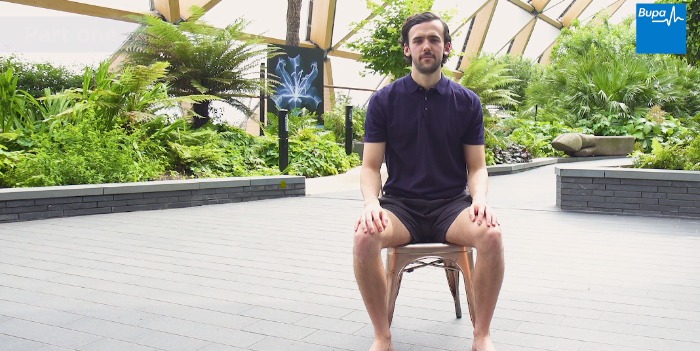
Position 1 - Thoracic rotations
Place your hands on either side of your head and then twist your upper body to face the side. Hold for a few moments and then twist to face the other side.
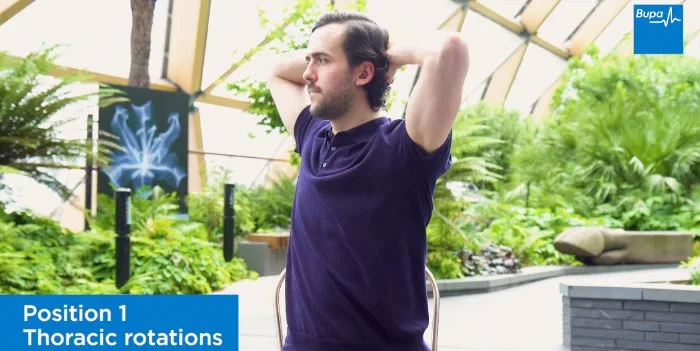
Position 2 - Cat and cow
Contract inwards from your tummy letting your chin drop down towards your chest. Hold and then sit up straight – eye line lifted and back slightly arched.
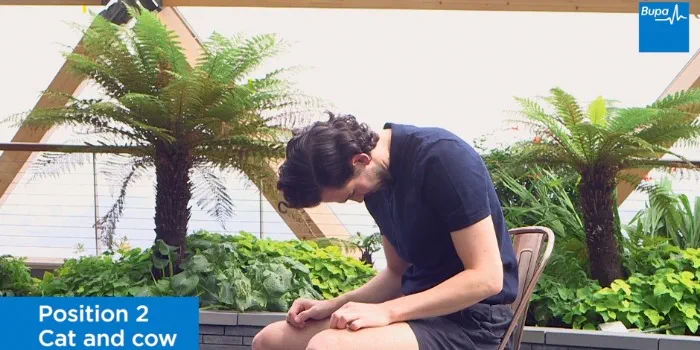

Position 3 - Rag doll
Move your feet apart, opening your legs as wide as possible.
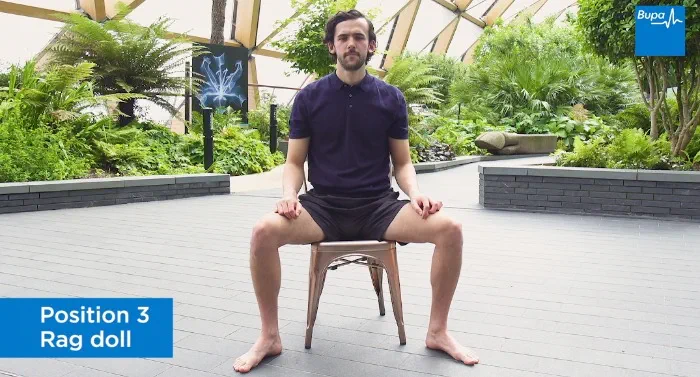
Slowly fold down through your spine until your head is suspended between your legs. As you do this, bring your arms into position. Then swing gently from one side to the other feeling the stretch in your lower back.
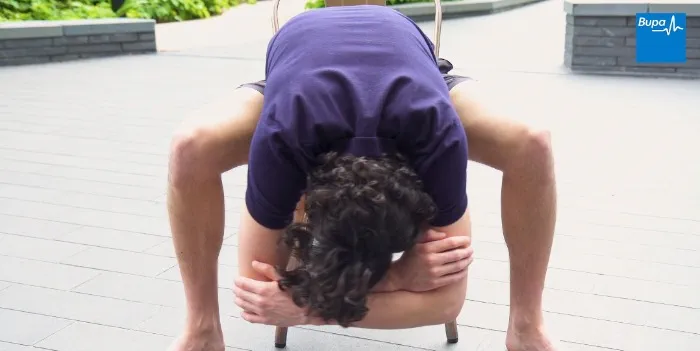
When you're done, come back to the centre, roll up and relax your arms.
Position 4 - Side flexes
Slide your hand down the inside of your calf, lean to one side and bring your other arm up and over your head. Feel the stretch and then come back to the centre.
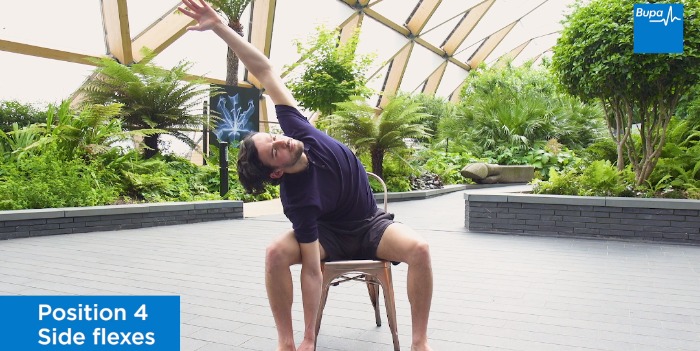
Position 5 - Circular arms
Now circle your arms lifting them forward, up and round.
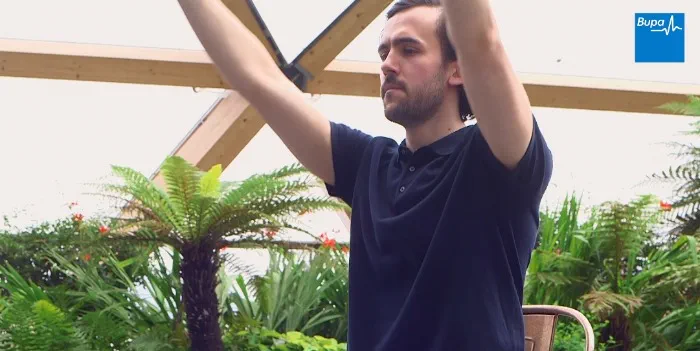
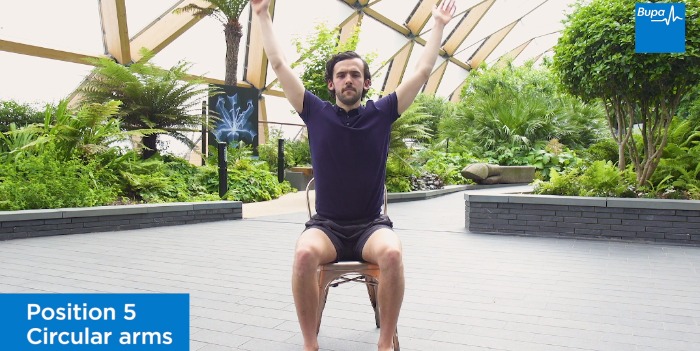
Position 6 - Pigeon pose
Bring your feet back together, lift one foot up, and with your knee out towards the side, rest it on your opposite thigh and feel the stretch. If you want to, lean forward to deepen the stretch.
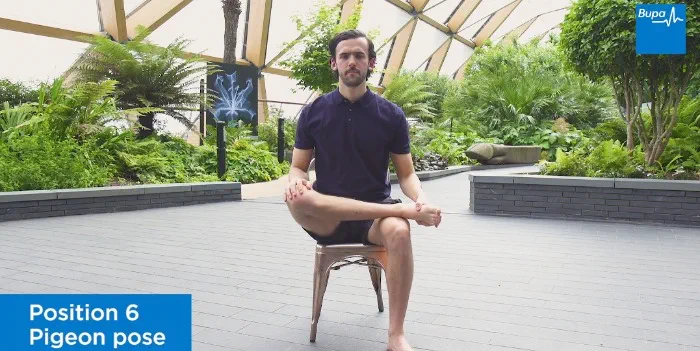
Part two – standing next to your chair
For this next part, you'll need to stand by the side of your chair. Move any obstacles out of the way and adjust the position of your chair if you need to.
Position 7 - Tree pose
Draw your foot up along the inside of your calf and then open and close your leg.
Make sure that you're rotating your leg from your hip joint and not twisting your whole body. Use the chair for support if you need to.
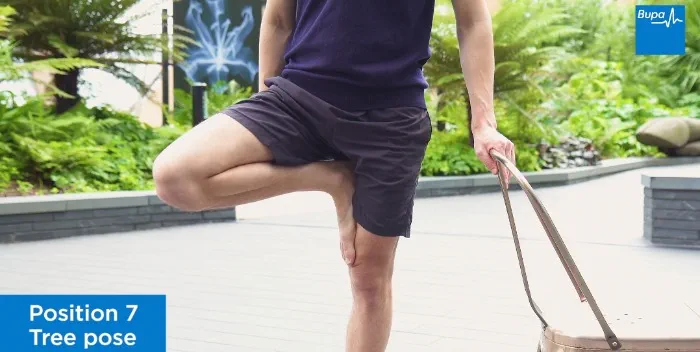
Position 8 - Squats
Stand so that your fingertips are just in reach of your chair. Squat planting the pressure through your heels and pushing back up through your glutes.
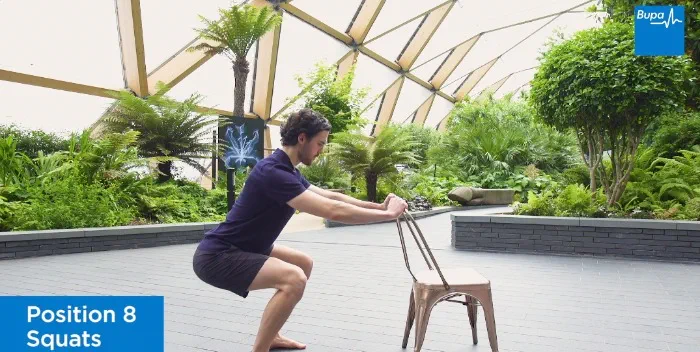
Final position - Back stretch
Using the back of your chair for support, lean forward and stretch out your back.
As you stretch, transfer the weight through your left arm and then through your right to get a deeper stretch. Drop down to the floor and then slowly roll up through your spine.
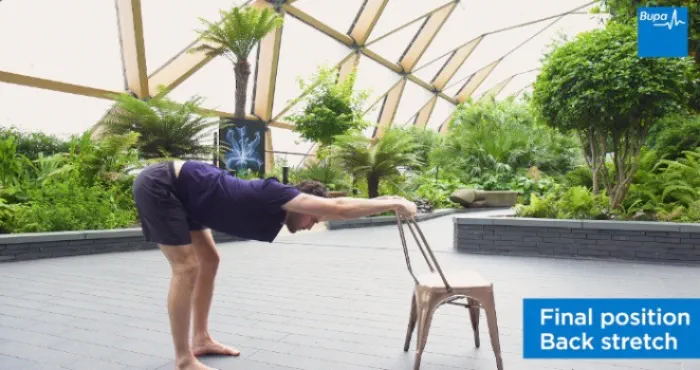
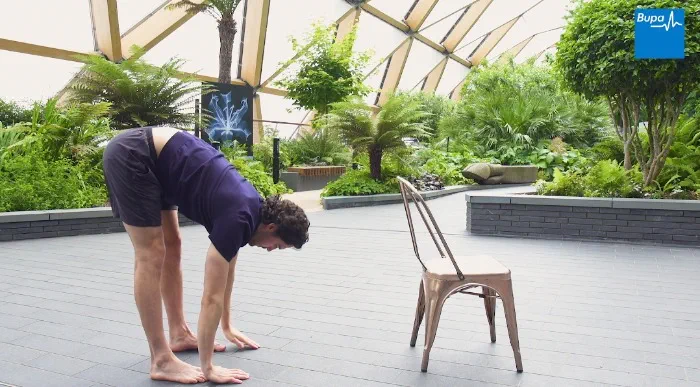
Other short home workouts
Looking for a quick yoga routine? Try our Morning yoga – this relaxing video routine only takes 12 minutes to do, and will help get your day off to a flying start.
Are you interested in learning more about your health? Discover more about our range of health assessments.
About our health information
At Bupa we produce a wealth of free health information for you and your family. This is because we believe that trustworthy information is essential in helping you make better decisions about your health and wellbeing.
Our information has been awarded the PIF TICK for trustworthy health information. It also follows the principles of the The Information Standard.

More exercise and fitness articles
Did you find our advice helpful?
We’d love to hear what you think. Our short survey takes just a few minutes to complete and helps us to keep improving our healthy lifestyle articles.
Legal disclaimer
This information was published by Bupa's Health Content Team and is based on reputable sources of medical evidence. It has been reviewed by appropriate medical or clinical professionals and deemed accurate on the date of review. Photos are only for illustrative purposes and do not reflect every presentation of a condition.
Any information about a treatment or procedure is generic, and does not necessarily describe that treatment or procedure as delivered by Bupa or its associated providers.
The information contained on this page and in any third party websites referred to on this page is not intended nor implied to be a substitute for professional medical advice nor is it intended to be for medical diagnosis or treatment. Third party websites are not owned or controlled by Bupa and any individual may be able to access and post messages on them. Bupa is not responsible for the content or availability of these third party websites. We do not accept advertising on this page.



